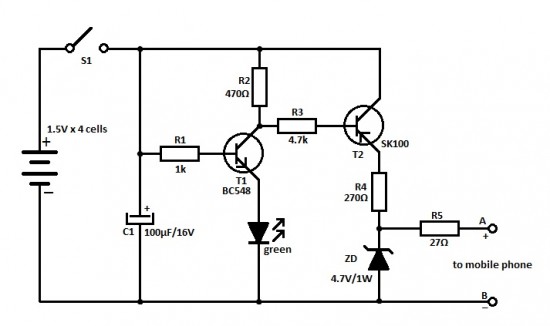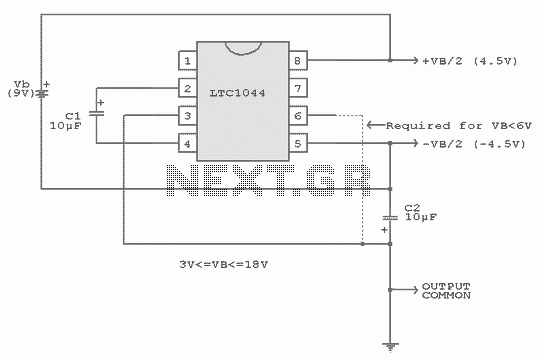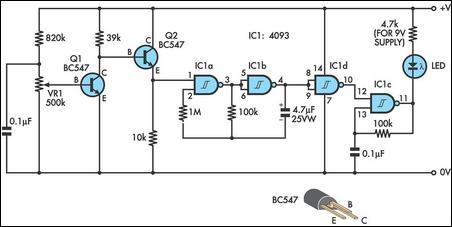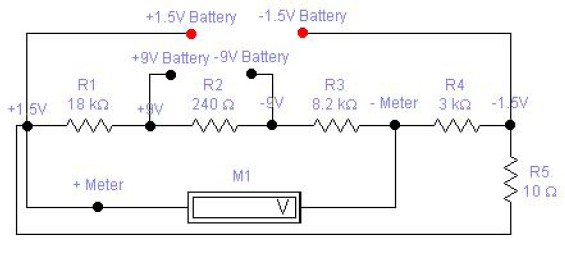
a single transistor smart battery charger

The electronic design features a smart battery charger schematic that utilizes only a single transistor. This design is notable as similar circuits typically employ simple integrated circuits. When the battery's charge level falls below a specific threshold voltage, the circuit automatically recharges it to a predetermined voltage. However, the circuit presents a couple of significant flaws. The single silicon junction renders the circuit highly sensitive to variations in ambient temperature. Comments indicate a sensitivity of approximately 0.5V per 10°C. For portable devices, one can mitigate the second flaw by incorporating the circuit into an external charger. Nevertheless, this solution is not feasible for uninterruptible power supplies (UPS) or other homemade backup power systems.
The smart battery charger circuit described operates primarily through a single transistor that acts as a switch to control the charging process. When the battery voltage drops below a defined threshold, the transistor is activated, allowing current to flow from the power source to the battery, thus initiating the charging cycle. The design's simplicity, which avoids the complexity of integrated circuits, can be advantageous for educational purposes or low-cost applications.
However, the sensitivity to temperature is a critical drawback. The circuit's performance can vary significantly with temperature changes, leading to inaccurate charging behavior. This sensitivity can result in either undercharging or overcharging the battery, potentially shortening its lifespan or causing damage. The mentioned sensitivity of 0.5V per 10°C highlights the need for careful temperature management or compensation techniques in practical applications.
For portable devices, integrating the circuit into an external charger can help alleviate some of these issues, as it allows for better thermal management and isolation from temperature fluctuations. This method can ensure a more stable charging environment, improving reliability. However, in applications such as UPS systems or homemade backup power supplies, the reliance on a single transistor circuit may limit performance. In these cases, more robust designs that incorporate temperature compensation or utilize multiple components may be necessary to ensure reliable operation across varying environmental conditions.
Overall, while the single transistor battery charger circuit presents an interesting and simplified approach to battery management, its limitations must be carefully considered in the context of the intended application.Electronic Design has a smart battery charger schematic using only a single transistor. This is interesting as similar circuits now contain simple integrated circuits. When the battery`s charge falls below a threshold voltage, it is automatically recharged to a preset voltage. Unfortunately, the circuit has a couple of major flaws. The single sili
The smart battery charger circuit described operates primarily through a single transistor that acts as a switch to control the charging process. When the battery voltage drops below a defined threshold, the transistor is activated, allowing current to flow from the power source to the battery, thus initiating the charging cycle. The design's simplicity, which avoids the complexity of integrated circuits, can be advantageous for educational purposes or low-cost applications.
However, the sensitivity to temperature is a critical drawback. The circuit's performance can vary significantly with temperature changes, leading to inaccurate charging behavior. This sensitivity can result in either undercharging or overcharging the battery, potentially shortening its lifespan or causing damage. The mentioned sensitivity of 0.5V per 10°C highlights the need for careful temperature management or compensation techniques in practical applications.
For portable devices, integrating the circuit into an external charger can help alleviate some of these issues, as it allows for better thermal management and isolation from temperature fluctuations. This method can ensure a more stable charging environment, improving reliability. However, in applications such as UPS systems or homemade backup power supplies, the reliance on a single transistor circuit may limit performance. In these cases, more robust designs that incorporate temperature compensation or utilize multiple components may be necessary to ensure reliable operation across varying environmental conditions.
Overall, while the single transistor battery charger circuit presents an interesting and simplified approach to battery management, its limitations must be carefully considered in the context of the intended application.Electronic Design has a smart battery charger schematic using only a single transistor. This is interesting as similar circuits now contain simple integrated circuits. When the battery`s charge falls below a threshold voltage, it is automatically recharged to a preset voltage. Unfortunately, the circuit has a couple of major flaws. The single sili
con junction makes the circuit extremely sensitive to ambient temperature changes. In the comments, someone mentions 0. 5V per 10 ° which sounds about right. For portable devices, you can avoid the second flaw by building the circuit into an external charger. However, this is not possible with UPS`s or other homemade backup power supplies.
🔗 External referenceWarning: include(partials/cookie-banner.php): Failed to open stream: Permission denied in /var/www/html/nextgr/view-circuit.php on line 713
Warning: include(): Failed opening 'partials/cookie-banner.php' for inclusion (include_path='.:/usr/share/php') in /var/www/html/nextgr/view-circuit.php on line 713




